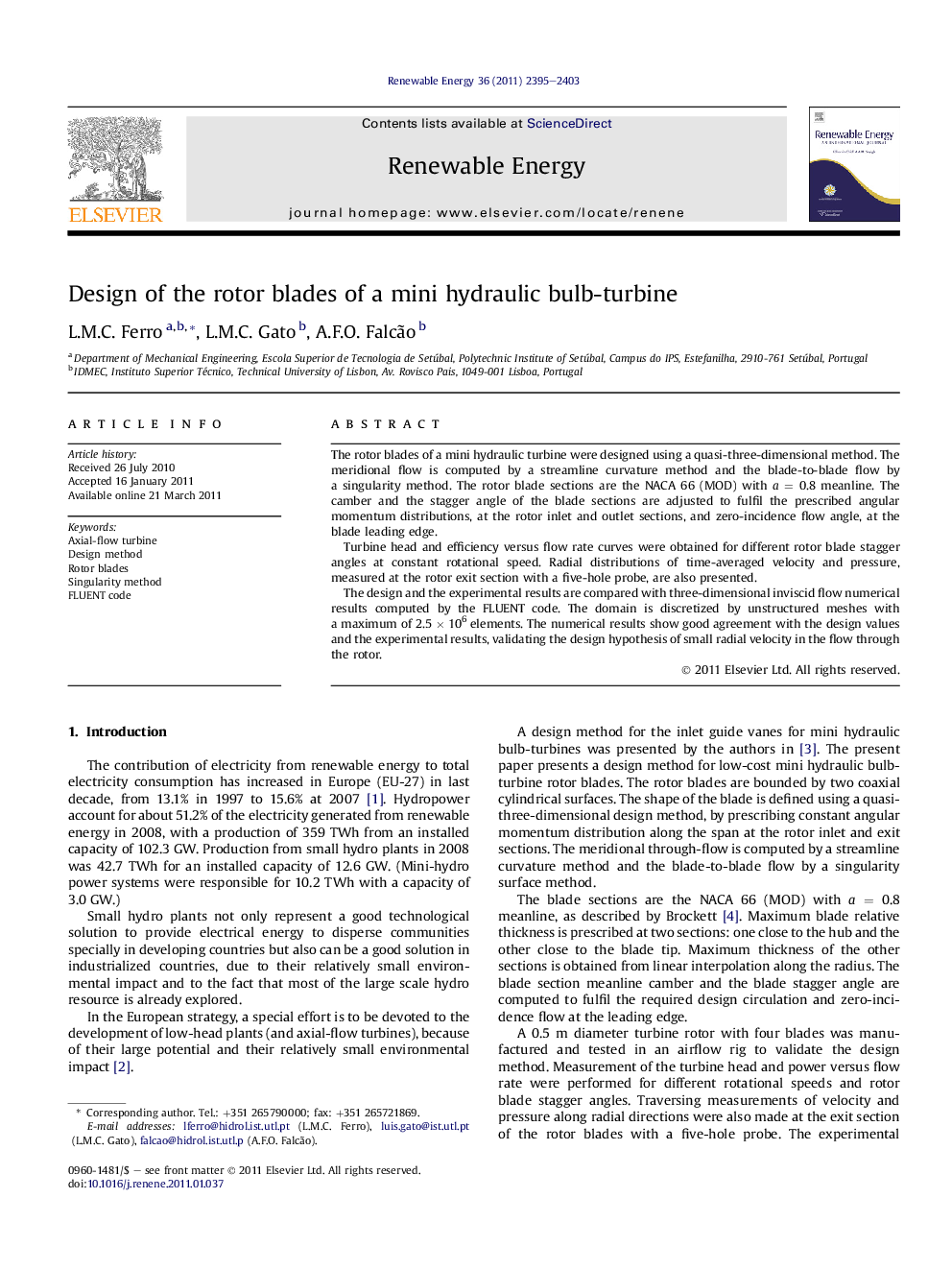| کد مقاله | کد نشریه | سال انتشار | مقاله انگلیسی | نسخه تمام متن |
|---|---|---|---|---|
| 301578 | 512510 | 2011 | 9 صفحه PDF | دانلود رایگان |

The rotor blades of a mini hydraulic turbine were designed using a quasi-three-dimensional method. The meridional flow is computed by a streamline curvature method and the blade-to-blade flow by a singularity method. The rotor blade sections are the NACA 66 (MOD) with a = 0.8 meanline. The camber and the stagger angle of the blade sections are adjusted to fulfil the prescribed angular momentum distributions, at the rotor inlet and outlet sections, and zero-incidence flow angle, at the blade leading edge.Turbine head and efficiency versus flow rate curves were obtained for different rotor blade stagger angles at constant rotational speed. Radial distributions of time-averaged velocity and pressure, measured at the rotor exit section with a five-hole probe, are also presented.The design and the experimental results are compared with three-dimensional inviscid flow numerical results computed by the FLUENT code. The domain is discretized by unstructured meshes with a maximum of 2.5 × 106 elements. The numerical results show good agreement with the design values and the experimental results, validating the design hypothesis of small radial velocity in the flow through the rotor.
► Quasi-three-dimensional method to design the rotor blades of a mini hydraulic turbine.
► Experimental validation of mini hydraulic bulb-turbine design.
► Pressure and flow velocity measurements in hydraulic turbine rotor.
Journal: Renewable Energy - Volume 36, Issue 9, September 2011, Pages 2395–2403